- 123
- 233
- 10
- 80
Interview With Officer:
Incident:
At 4:56 a.m., central daylight time, on October 15, 2005, westbound Union Pacific Railroad (UP) train ZYCLD 132 collided with the rear of standing UP train MPBHG 15 in the UP rail yard in Texarkana, Arkansas.
The collision resulted in the puncture of a railroad tank car containing propylene, a compressed flammable gas. The propylene was heavier than air and flowed near the ground into a nearby neighborhood. The flowing gas reached a house where an unknown ignition source ignited the gas, and the house exploded.
The single occupant was killed. The fire moved quickly along the flowing gas back to the punctured tank car. A second, unoccupied, home was destroyed in the fire, and a wooden railroad trestle burned completely. Approximately 3,000 residents within a 1-mile radius of the punctured tank car were advised to evacuate the area. The two crews and the employees working at the Texarkana yard were not injured, and they evacuated the area safely. Between 5:00 a.m. and 7:00 a.m., the wind was calm, the visibility was 10 miles, and the temperature was approximately 59° F. Total damage was $2.4 million, including $325,975 in equipment damage and $2,053,198 in track damage. The engineer and the conductor of train ZYCLD were scheduled to go on duty at 10:00 p.m. for a planned 260.9-mile trip from Pine Bluff, Arkansas, to Big Sandy, Texas. The crew was experienced over the territory.
The engineer and the conductor arrived at the Pine Bluff yard office at 9:45 p.m. and 9:50 p.m., respectively. They gathered the necessary paperwork for the trip, read the required notices, and conducted a safety briefing to discuss the trip. They were transported to their train at 11:00 p.m. The engineer performed an air test on the train, and the conductor checked the hand brakes. An employee from the mechanical department performed a successful air brake test on the train before the train departed at 11:34 p.m. The train consisted of 2 locomotive units and 57 loaded cars. The train was 5,598 feet long and weighed 3,961 tons. When train ZYCLD reached McNeil, Arkansas, 104.5 miles from Pine Bluff, the crew encountered a red signal, which was an indication that the train was following a train (MPBHG). The conductor told investigators that the trip was normal and the crew was not surprised to be following another train. The signal changed from red to yellow and then to flashing yellow. The train left McNeil on a flashing yellow signal, which meant that the train was at least two signal blocks behind the preceding train. At Stamps (two stations and 17.8 miles later), the crew encountered flashing yellow signals at both ends of the siding, meaning that they were still approximately two block signals behind the preceding train. At Lewisville (4.5 miles beyond Stamps) the crew observed a red signal that changed to yellow before the train had to stop. The signal at control point (CP) CB 414 (East Texarkana) remained red, and the crew said that they stopped the train and waited for a more favorable signal.
According to the electronic signal records from the dispatching system, this signal (CP CB 414) went from red to yellow about 4:13 a.m. and from yellow to flashing yellow about 4:24 a.m. The event recorder on the lead locomotive indicated that train ZYCLD started moving at 4:45 a.m., 21 minutes after the signal had changed to flashing yellow. When investigators asked the crew why they did not proceed when the signal changed from yellow to flashing yellow, the crew could not provide a reason. The crew said that they did not call anyone on the radio while the train was stopped, but they did have a personal conversation. UP rules allow napping by one crewmember when the train is stopped if the other crewmember stays awake. The conductor and the engineer said that they did not nap during that time. The crew reported having extensive conversations during the trip. The next signal that train ZYCLD encountered was at CP CB 416. The signal had displayed a yellow aspect since 4:24 a.m., and the train passed this signal at 4:51 a.m. When the train passed the Texarkana rail yard limits at milepost (MP) 416.4, its speed was approximately 19 mph, according to the event recorder.
The territory inside the yard limits was not controlled by the train dispatcher and did not have signals to indicate the presence of other trains. Within this territory, all trains were required to be operated at restricted speed. The engineer was controlling the train speed by using the power of the locomotives against the braking force applied on the cars of the train. He applied more braking at MP 416.77, at 18 mph with the engine at throttle 4. The train slowed to 17 mph; and at MP 417.02, the engineer increased to throttle 5. Between MP 417.02 and MP 417.51, the engineer sounded the horn for a grade crossing and maintained the train speed at 17 mph. At MP 417.86, train ZYCLD collided with the rear car of train MPBHG. After the collision, the event recorder showed the speed falling, a throttle reduction, a dynamic brake application, and an engineer-induced emergency brake application. While the crew had worked all night, and their circadian rhythms were at a low point when the collision occurred, the engineer was actively operating the train shortly before the accident. He had blown the whistle at a grade crossing approximately 1/3 mile (70 seconds) before the collision and controlled the train's speed by making brake and throttle adjustments only 1 mile before the collision. Further, during interviews, the crew told investigators that they had recognized a “dogleg” track configuration ahead of their train shortly before the point of impact. They both said that they had observed the standing train on their track with just enough time to brace themselves before impact. When train ZYCLD struck the rear car of train MPBHG, neither the locomotives nor the cars on train ZYCLD derailed. The forces of the striking train derailed the rear three cars on train ZYCLD derailed.
The forces of the striking train derailed the rear three cars of train MPBHG, but the cars remained upright. Then the forces were transmitted through the next 12 cars without derailing them. As a result of the collision, the 18th car was forced out of train MPBHG completely, and the 17th car continued forward until it struck the end of the 19th car (tank car TIMX 33429) and punctured the head of the tank car with its uncoupled coupler. (See Figure 2.) The tank car was loaded with liquefied propylene gas, and immediately after it was punctured, about half of its propylene load was released. The propylene tank car was equipped with a tank-head puncture-resistance system and jacketed thermal insulation. Performance standards for tank-head puncture-resistance systems are contained in 49 Code of Federal Regulations 179.16. The regulations require that a tank-head puncture-resistance system on a standing tank car be capable of sustaining, without any loss of lading, the impact from a coupler on a single freight car that weighs at least 263,000 pounds and is moving 18 mph. Train ZYCLD weighed more than 8.7 million pounds.
The propylene did not ignite immediately. Eyewitnesses said that after the collision they saw fog-like conditions near the track in the ditches and low points of the surrounding area. A local law enforcement officer stated that he saw a fog-like substance reach a residence, which then exploded. He then saw a bluish flame follow the groundlevel fog to the train, and then he saw another explosion near the derailed tank car.
Emergency Response:
At the time of the accident, the yardmaster and eight other persons were on duty in the Texarkana yard during the evening work shift. In addition to these nine yard employees, there was a two-member crew in each of the arriving trains, MPBHG and ZYCLD. Shortly after the 4:56 a.m. collision of the two trains, the crew of standing train MPBHG notified the yardmaster that their train had been struck.
About 5:00 a.m., the crew of the striking train advised the yardmaster that at least two cars at the rear of the train in front of them had derailed and were on the ground. The Texarkana, Arkansas, 911 communications center received several calls between 4:56 a.m. and 4:59 a.m. from residents complaining of a chemical odor adjacent to the Texarkana rail yard. The Texarkana 911 police dispatcher received the initial notification.
The Texarkana fire and police departments then dispatched units, and the Texarkana Office of Emergency Management was notified about 5:00 a.m. Within the next several minutes, a police unit responding to the initial complaint (in the area of Hobo Jungle Park, across the street from the accident) reported to the 911 police dispatcher a chemical smell and a white cloud drifting south. During this time, the 911 police dispatcher received additional calls from residents in the Hobo Jungle Park area complaining of breathing difficulties. As the responding fire units established the initial command post within 1/4 mile of the yard, they encountered several residents with respiratory complaints. About 5:04 a.m., the 911 police dispatcher contacted the UP yardmaster. The yardmaster told the dispatcher that at least two cars at the rear of a train had derailed and that they might contain vinyl acetate residue. The dispatcher told the yardmaster about reports of a chemical odor at the scene. Reading through the train consist, the yardmaster told the dispatcher that the 19th car from the end of train MPBHG was a tank car containing propylene, a flammable gas.
The yardmaster also told the dispatcher that he did not know whether the propylene tank car had derailed. He did not mention that the six cars ahead of the propylene tank car were also tank cars loaded with propylene.
Damage:
As a result of the collision, approximately 300 feet of track was disturbed. As a result of the fire, the railroad trestle was burned completely. Eight cars derailed on train MPBHG, one of which, a tank car, was destroyed. Four cars on the adjacent track maintenance train were also destroyed by the fire. Total equipment damage was $325,975, and track damage was $2,053,198. Two houses (one vacant), a shed, and a nearby highway bridge were also destroyed by explosion and fire. At least three highway vehicles that were parked near the tracks were burned completely. Fire destroyed the rear tires of a semitrailer parked near Hobo Jungle Park. The fire also burned approximately 4 acres of grass, brush, and trees.
Train:
Train ZYCLD originated in Chicago, Illinois, on October 13, 2005. The train received a Class I mechanical inspection and an initial terminal air brake test before departure. No mechanical defects were reported. The train received an additional Class I mechanical inspection and a Class IA 1,000-mile air brake inspection at Pine Bluff, Arkansas, on October 14, 2005. No mechanical defects were reported. Air brake leakage was recorded at 40 cubic feet per minute, which falls within the requirements of the FRA. No mechanical defects were reported during the trip from Pine Bluff to Texarkana. The locomotive engineer stated that the train had handled as anticipated during acceleration and deceleration.
Photos:
NTSB reports:
https://www.ntsb.gov/investigations/AccidentReports/Reports/RAB0604.pdf
- 35
- 194
On 4 August 2020, a large amount of ammonium nitrate stored at the Port of Beirut in the capital city of Lebanon exploded, causing at least 218 deaths, 7,000 injuries, and US$15 billion in property damage, as well as leaving an estimated 300,000 people homeless. A cargo of 2,750 tonnes of the substance (equivalent to around 1.1 kilotons of TNT) had been stored in a warehouse without proper safety measures for the previous six years after having been confiscated by Lebanese authorities from the abandoned ship MV Rhosus. The explosion was preceded by a fire in the same warehouse.
The blast was so powerful that it physically shook the whole country of Lebanon. It was felt in Turkey, Syria, Palestine, Jordan, and Israel, as well as parts of Europe, and was heard in Cyprus, more than 240 km (150 mi) away. It was detected by the United States Geological Survey as a seismic event of magnitude 3.3 and is considered one of the most powerful non-nuclear explosions on record.
Fire and first explosion
Around 17:45 local time (14:45 UTC) on 4 August 2020, a fire broke out in Warehouse 12 at the Port of Beirut. Warehouse 12, which was waterside and adjacent to the grain elevator, stored the ammonium nitrate that had been confiscated from Rhosus alongside a stash of fireworks. Around 17:55 local time (14:55 UTC), a team of nine firefighters and one paramedic, known as Platoon 5, was dispatched to fight the fire. On arrival the fire crew reported over the radio that there was "something wrong" as the fire was immense and produced "a crazy sound."
The moment of the explosion was captured during a BBC interview.
Collated time of arrival vs distance from analysis of social media video footage, with the best estimate (0.50 kt TNT) and reasonable upper limit (1.12 kt TNT) curves determined from regression analysis.
Despite inefficient transmission of the shock waves into the ground,[c] the United States Geological Survey measured the event as a 3.3 local magnitude earthquake, while the Jordan Seismological Observatory reported that it was equivalent to a 4.5 ML earthquake. A study of seismic signatures of the explosion by the Federal Institute for Geosciences and Natural Resources in Germany produced a yield estimate between 0.5 and 1.1 kt of TNT.
An independent estimate by the International Monitoring System of the Comprehensive Nuclear-Test-Ban Treaty Organization based on infrasonic data obtained an explosive yield equivalent to 0.5–1.1 kt of TNT, making it the sixth-largest accidental artificial non-nuclear explosion in human history.
Damage
The damage from the blast affected over half of Beirut, with the likely cost above US$15 billion and insured losses at around US$3 billion. Approximately ninety percent of the city's hotels were damaged and three hospitals completely destroyed, while two more suffered damage. Dozens of injured people brought to nearby hospitals could not be admitted because of the damage to the hospitals. Windows and other installations of glass across the city were shattered.
S. Dagher Building, located opposite the port's free zone entrance, suffered extensive damage
The Port of Beirut as seen from the International Space Station a week after the disaster, with inset of an enlarged view of the explosion crater (top left)
Saint George Hospital University Medical Center before disaster
One of the city's largest medical facilities, was less than 1 kilometer from the explosion, and was so badly damaged that staff were forced to treat patients in the street. Four nurses died from the initial blast, fifteen patients died after their ventilators stopped working, and several child cancer patients were injured by flying glass. Within hours, after discharging all its patients and sending some to other facilities, Saint George Hospital was forced to close.
In the first week after the explosion, civilians gathered in hundreds to volunteer to clean up the debris on the streets and inside homes and businesses in Gemmayze, Achrafieh, and Karantina neighbourhoods. Many civil society organizations offered equipment and food to the volunteers, while many residents and businesses opened their homes and hotels for free to those who lost their homes in the blast.
On 6 August 2020, the Lebanese Forces Party's executive chairman Samir Geagea was the first politician to visit Beirut and launched from there a relief committee, Ground-0, under the leadership of the former minister Dr. May Chidiac to support in rebuilding Beirut. In December 2020, the committee achieved repairing 709 houses, assisted 5300 individuals and 2300 families, distributed 14000 food rations, made 2540 medical consultations, and provided 2030 individuals with medicine. In addition, the committee distributed more than 150 scholarships for Beirut schools' students.
- 9
- 71
According to preliminary data of the department, the cause was a gas leak followed by a fire in the car. A 3-year-old child died, a 52-year-old man was seriously injured. The publication, citing eyewitnesses, writes that the explosion occurred when the driver began to warm up the car. He started the engine, put the child in the passenger compartment, closed the door and walked away. During the explosion, the man was thrown back by the shock wave, he hit his head and lost consciousness. Neighboring cars caught fire (these moments were caught on video, they are published by the media and social networks). People who ran up to the car did not know that the child was inside, so they did not try to save it.
- 13
- 27
Man throws a frag grenade into a billiard to intimidate the owners for not paying a tax to the local gang. six people were wounded and two killed in the attack





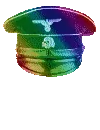
















.webp?x=8)







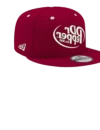

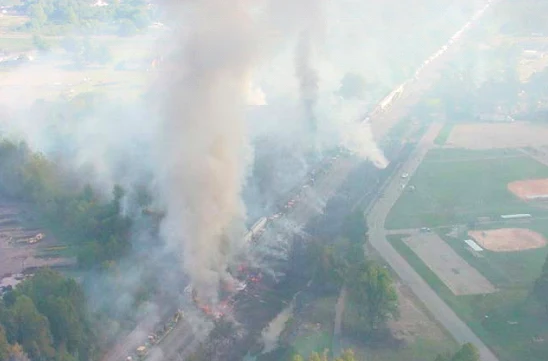
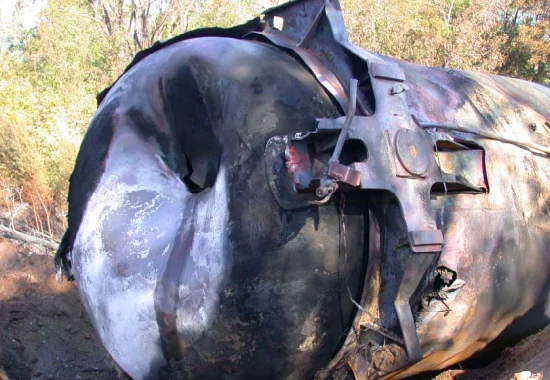


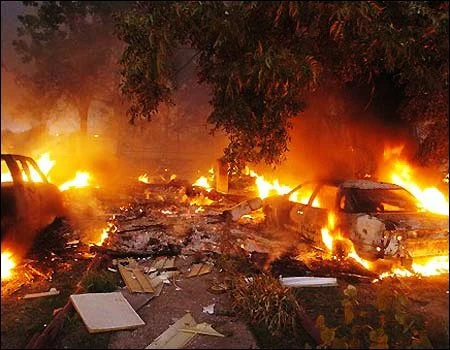
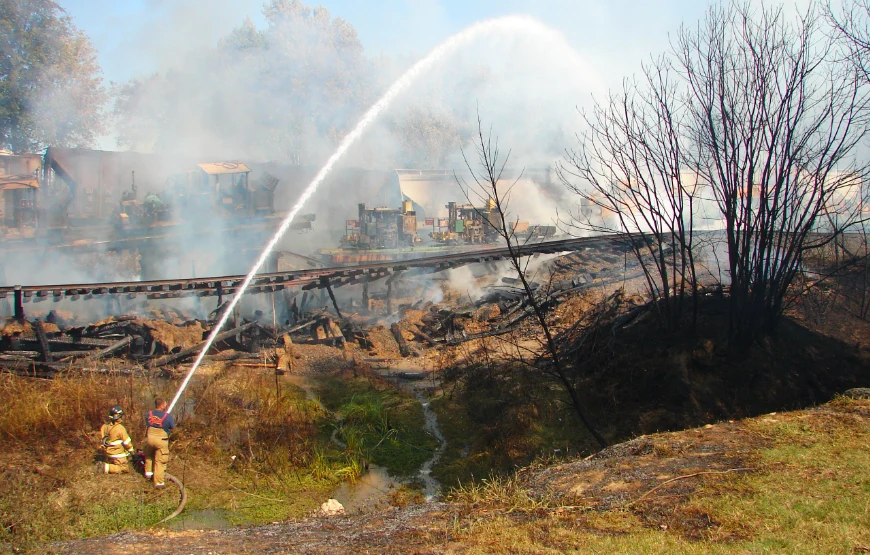







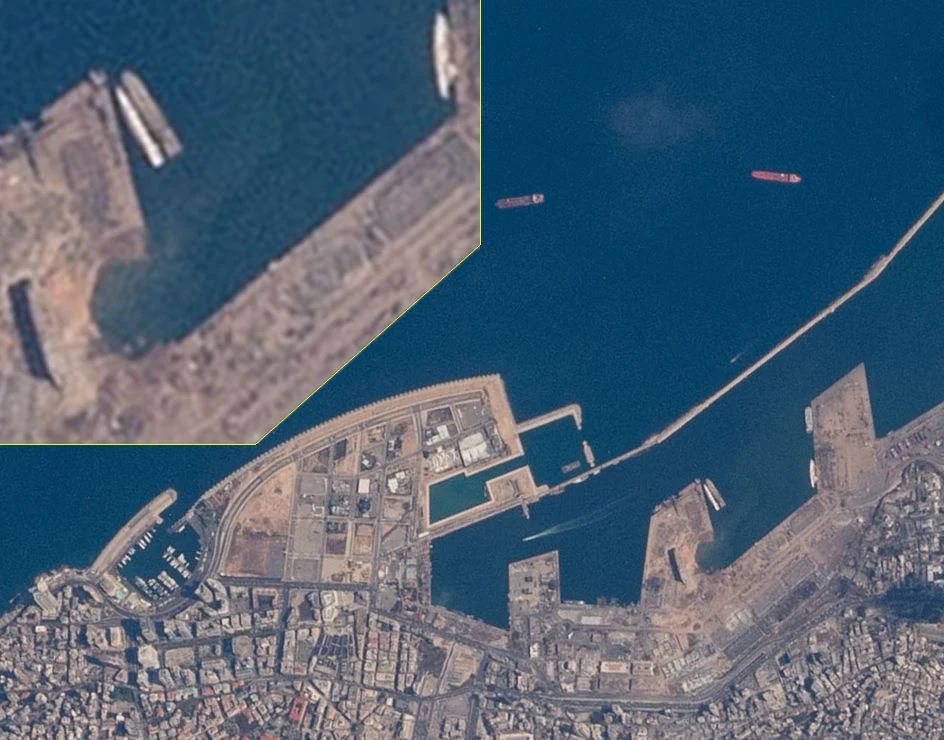

















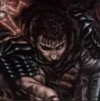



















 Slavshit
Slavshit

 Sandshit
Sandshit
